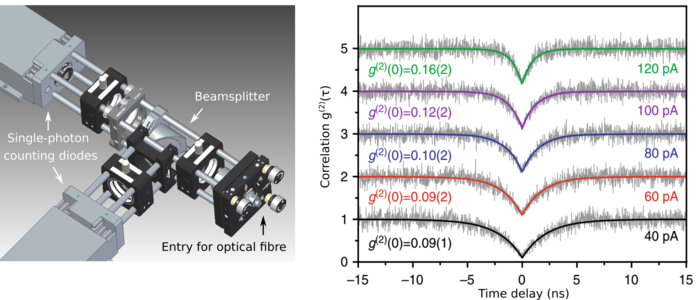In many aspects, future quantum optical technologies rely on the availability of single-photon sources. While this prospect of applications has been driving the interest in the development of single-photon sources, the detection and analysis of single-photon statistics also allows to gain new insights into fundamental processes of the quantum system under scrutiny. In both regards, single molecules are highly interesting candidates for electrically driven single-photon sources. We have developed a low-temperature scanning tunneling microscope (STM) that allows to collect light emitted from individual molecules placed in the tunnel junction. The collected light is then guided into a spectrometer or photon counting diodes via an optical fiber.
In the beginning of this master thesis, the single-photon detection system will be set up, following the design of a Hanbury Brown–Twiss interferometer. This setup will then be used to characterize the single-photon nature of the light emitted from individual molecules in the STM junction. More precisely, the ratio of the probability of multiple-photon emission and the probability of single-photon emission will be measured. This second-order correlation function, g(2)(τ), is an indicator for the purity of the single-photon light source. In addition, the time constants that can be extracted from this correlation function allow to reveal the exciton dynamics involved in the photon emission within the molecule.
The master thesis will be carried out at the Institute of Nanotechnology (INT, CN).

Left: Single-photon detection system for correlation measurements. Right: Typical second-order correlation measurements of single molecules in the STM junction (L. Zhang et al, Nat Commun 8, 1 (2017)).